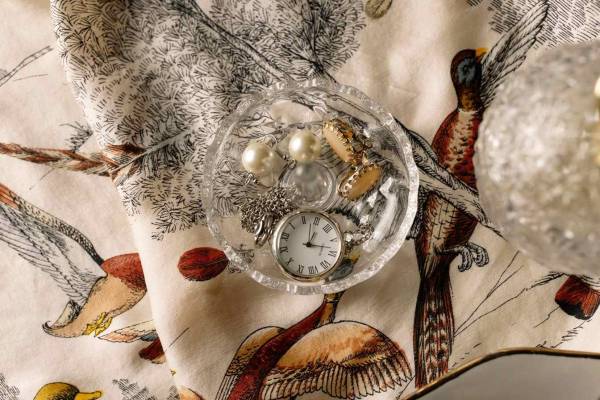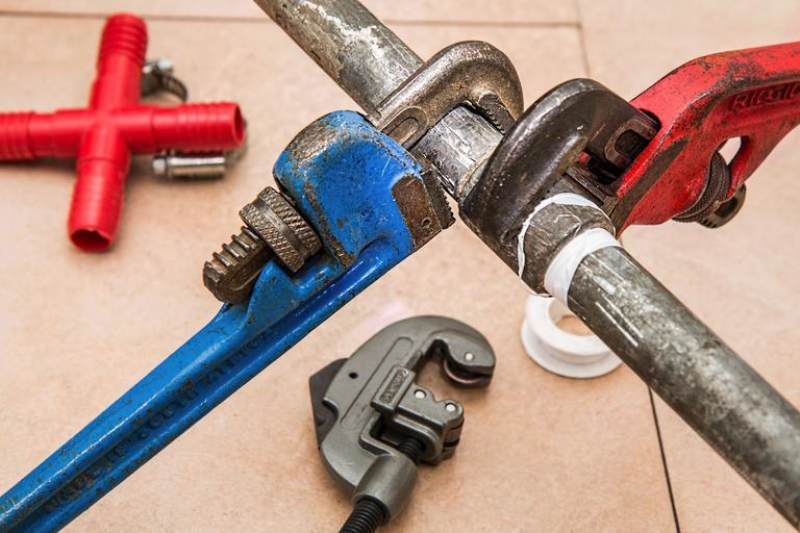Even if launching a profitable business from the comfort of your home has never been simpler, establishing a jewelry business is still an exciting and risky venture. Keeping up with many orders might be challenging as your jewelry business expands.
It’s challenging to plunge into designing jewelry, partnering with reliable jewelry-making supply stores, and opening your jewelry store, but the payoff is worth the risk. Yet, starting a jewelry workshop is a fantastic way to earn extra money or even a living wage, whether you want to make your pieces, produce your ideas with a factory, or sell pre-made products.
Everyone has a different standard by which they judge the success of a jewelry business. Most likely, though, you want to make jewelry that you’re pleased with and that customers would buy so that you can support your lifestyle.
There is much to remember about starting a jewelry workshop to turn your passion into a full-fledged business. Although there may be a lot of competitors in the jewelry industry, you can give yourself the best chance of success by developing a solid business strategy, narrowing in on your ideal clientele, and building a name for your jewelry line by designing jewelry.
STEP ONE: Setup a Legal Foundation
A business plan is an all-encompassing description of your company and its future goals and objectives. Furthermore, a time-bound, concrete strategy for accomplishing these objectives should be included.
Get your company officially recognized by the government. Business registration is typically necessary to have official legal standing in many jurisdictions, including many U.S. states.
Small business owners should familiarize themselves with applicable municipal laws. To sell jewelry online, though, you likely won’t need a commercial license. However, a tax ID may be required in some countries, depending on your money.
Contacting the Small Business Development Center and Chamber of Commerce in your area is an excellent place to start, although procedures might differ from place to place. You can get it from them if you need assistance registering your firm.
STEP TWO: Produce a Brand Name That Others Can Recognize
Marketing your business as a brand will set you apart from every other artisan jewelry shop. Your brand aims to foster relationships with your target audience by demonstrating commonalities in values and preferences.
Having a name for your jewelry business that stands out from the crowd and conveys something about your company’s identity is essential, as this is the first impression you’ll make on potential clients. To help your target market understand what you’re selling, it can be a good idea to give your business a name that alludes to one of the materials you use regularly, your production process, or your aesthetic preference.
It’s a good idea to quickly check to determine if the domain name you’ve chosen for your business is still accessible. Name searches can also be performed by the trademark and patent office, city council, or lawyer.
STEP THREE: Create an Effective Brand Identity
To define your brand, you must first identify the features that set your product apart from the competition. Determine what sets your company apart from the competition and make that your key selling point.
Your company’s unique selling proposition may also include guiding principles. Be it a commitment to using sustainable materials, a minimalist geometric aesthetic, or a consistently fashion-forward style, persistent and unique branding can help attract fresh and repeat clients.
Even if you don’t start with a clear idea of what you want your brand to represent, you can develop one through time. Create or buy jewelry that reflects your tastes, and then talk with your clients about what they like best about it.
Develop a logo that represents your company
Remember to base the logo’s design around your brand and its intended consumers. Then, when you begin sketching, write down all the information and aesthetic preferences you have for your logo. A professional can design a custom logo if you have the budget. Many no-cost logo generators are available on the web if you’re strapped for cash.
Get your company’s website ready
It is now simpler than ever before for jewelry makers to bypass middlemen and offer their wares directly to their devoted customers. In addition, the internet has made it possible for up-and-coming jewelry designers to sell their wares to a broader audience at a fraction of the expense of launching a brick-and-mortar store.
Make a website with examples of your work, information on where to buy it, and your contact details. You can also sell jewelry right from your website if that’s how you choose to do business online.
Do a photography session showcasing jewels
Poor lighting and unflattering angles may make even the most stunning jewelry unattractive to potential purchasers. Instead, take professional images of your finished products to attract more online buyers and showcase your business’s best features.
Use the same or comparable backgrounds in your product photographs to maintain cohesion. As the jewelry is visually appealing, high-quality product images are essential, especially if you plan to sell your wares online.
STEP FOUR: Identify Your Designing Jewelry Niche
You will want to find a way to differentiate yourself from the plethora of other jewelry and accessory retailers by providing something that either doesn’t exist or is difficult to find. You can succeed in the jewelry business by catering to a niche market or selling items that serve a specific function.
Handmade jewelry
There is a transparent market for handmade jewelry, as evidenced by the success of internet shops like Etsy. Although handmade jewelry cannot be manufactured in large quantities, it is a good alternative for entrepreneurs who wish to create and sell one-of-a-kind or personalized items.
Yet, unless you’re willing to play both the jewelry creator and the marketer to lure Etsy buyers to your store, the competition on marketplaces like Etsy may be fierce, making it difficult to sell your personalized work and create a following. If you’re manufacturing jewelry on demand or making one at a time, scaling up can be challenging.
Fine jewelry
Gold-filled beads and findings, silver, platinum, gems, and rubies are just some of the precious metals and stones used to craft fine jewelry, which is frequently linked with affluence. Jewelry of this kind is typically reserved for formal events because of its elegant design and superior craftsmanship.
Depending on circumstances, such as the quality of the materials used, the size of the piece, where it was made, and the prestige of the brand, the price of fine jewelry can vary anywhere from $100 to $3,000. This type of ring provides a fresh alternative to traditional jewelry shopping by letting customers design their own ring instead of simply selecting one off the shelf.
Costume jewelry
Everyday wear is in the cards for your costume jewelry. In contrast to fine jewelry, costume jewelry is typically made of inexpensive and fake materials such as plastic, wood, brass, and other precious metals.
Costume jewelry, even if purchased separately, should cost no more than $100. If you want to make a profit out of selling fake jewelry, you need to come up with a price strategy that won’t put off a lot of buyers.
STEP FIVE: Do Your Research and Identify the Jewelry Trend
If you want to start a jewelry business, you need to make sure there is a market for your products, ideally one that isn’t already saturated. Customers who begin their jewelry search online usually already know what they want: you need to know what those customers are looking for to attract the right kind of customers.
Investigating the competition is the next logical step after deciding what kind of jewelry to offer and who your target market is. Find out how to beat the competition by looking into their prices, deals, social media channels, social commerce strategy, customer feedback, and media coverage.
Shipping times are another factor to consider as a competitive advantage, as fast shipping can increase client loyalty. The majority of consumers who purchase online want their orders to arrive at their doorstep within two days. To be competitive with Amazon’s jewelry businesses, you may wish to team up with a 3PL if you want to offer 2-day shipping.
STEP SIX: Begin Building the Jewelry Designs
It takes a one-of-a-kind look to break away from the pack. The truth is that many new jewelry designers are entering the market now that the cost of producing exquisite jewelry has decreased.
This will be less of a challenge for you if your educational background includes studies in art and design. However, without formal art or jewelry design training, you may always engage a professional to bring your vision to life or collaborate with a jewelry design studio on the first sketches.
Inspiring yourself on your aesthetic
This is the simple beginning if the jewelry is your true calling. Inspiration may be found anywhere, from your loved jewelry designers to the newest fashions to anything in between.
Looking at current tendencies can help you zero in on a specific path. Follow industry influencers and keep up with the latest news from style and jewelry blogs and magazines to always be ahead of the curve.
On the other hand, you may investigate related tendencies or consumer behaviors, such as the demand for tailor-made encounters or products made from sustainable or ethically-sourced materials. You may also examine the total number of searches for a topic worldwide by using Google Trends.
Getting ideas for jewelry design
A compelling aesthetic, original concept and consistent branding are essential for newcomers in any area of the fashion industry. Therefore, you should run through a few activities to determine your general characteristic style before working with a designer to establish your brand and produce individual pieces.
Image, color, and texture inspiration can be found in various sources, including nature, architecture, fashion, and travel. Make your own online mood boards, download jewelry design software on your mobile device, or compile real inspiration on a corkboard or notebook according to how you work best when creatively blocked.
Creating rough sketches of your final design
Your jewelry design process will then go on to the following step: sketch out some preliminary concepts. If you can’t draw, try to scribble out at least some ideas for how you want your finished products to look.
If you’re an artist sketching jewelry, try to include as much information as possible. You can use these sketches to show potential investors and business partners your vision for the brand.
Specifications and measurements should be written down wherever feasible. Include the sort of metal you’ll be using, any essential technical details, and the carat weight of any gems you plan to use.
STEP SEVEN: Collect All Required Funds
If you don’t want to make each piece of jewelry by hand, you’ll have to find a jewelry manufacturer to collaborate with. However, making your first few pieces of jewelry is surprisingly inexpensive, although it may seem like you need a lot of money to get started.
Once again, this expense is proportional to the sophistication of your selected production model. Making jewelry on your kitchen table and starting a business from scratch requires a few hundred dollars for initial supplies. Alternatively, you can open a fine jewelry company from the comfort of your home by investing tens of thousands of dollars in equipment and expensive raw materials.
You may have anything created to order as soon as you start earning a profit. Itisn’t necessary to make hundreds of jewelry items before it’s established; instead, you can concentrate on producing inventory once you have a continuous stream of sales.
The total cost of these operations might range from as little as $3000 for a straightforward ten-piece collection to well over a hundred thousand dollars if the design is intricate or the materials are expensive. Of course, the cost will increase if your jewelry is covered in jewels, is thick, or requires intricate 3D modeling.
STEP EIGHT: Know the Costing and Outsourcing Process
Manufacturing costs for jewelry can be tricky to price. It is crucial to know how much you are spending on each jewelry item and where that money is going, and the jewelry factory you are working with may help you achieve just that.
Consider outsourcing your jewelry production
Hire a factory to make your jewelry if you want to sell it in bulk but don’t want to make each item individually. First, have your design meticulously sketched out or rendered in 3D software. Then, have a team of assemblers or a factory team construct the parts for you.
Consider the outsourcing and production costs
Once you have some ideas for your jewelry line’s designs, it’s time to start thinking about where you’d like to have them made. To create your designs by hand, you must invest in various jewelry-making tools and supplies.
STEP NINE: Produce the Initial 3D Models and Begin Manufacturing
You should consult with a 3D jewelry designer once you have set aside a modest budget to manufacture your first collection. A 3D design created by a freelance designer unfamiliar with jewelry production can lead to an unusable model that your jeweler can’t modify.
Although collaborating with a freelance CAD designer is an option, it is more common to collaborate with a designer at a reputable jewelry studio. This way, you’ll know that the designer you’re working with has experience with jewelry and won’t make any critical design mistakes.
Once you give the jewelry studio the green light on the 3D model, production will commence. Once the wax model is approved, the jeweler can cast it in your choice of precious metal and set it with your chosen gemstones.
STEP TEN: Create Multi-Channel Marketing Strategies
Getting customers interested in purchasing can be difficult for a new jewelry store. Get your ads in front of the most inclined to buy. Use the information you gathered, including information on the competitors, to craft a multi-channel marketing plan as you work to expand your client base.
Search engine optimization
Free website traffic is the best kind of traffic: social media advertising is becoming increasingly expensive as more and more online stores rely on it to generate revenue. Your blog entries, product listings, guides, and other owned content can rank higher in search results and receive more visitors with a good SEO plan without increasing your ad expenditure.
Social media
Consumers frequently read product reviews and ratings before making purchases. Promote your brand’s unique selling points via online posts. Share photos and videos of customers wearing your jewelry while they exercise.
SMS marketing
SMS marketing is a relatively new but rapidly expanding avenue for internet businesses. High open rates for SMS marketing ensure that nearly everyone on your subscriber list will receive your messages and offers.
Email marketing
Email marketing is still very much alive, despite what many may think. Building an email list is a powerful tool for increasing brand awareness and client loyalty. However, ignoring email marketing industry standards and bombarding your customers with messages can cause them to unsubscribe in droves.









